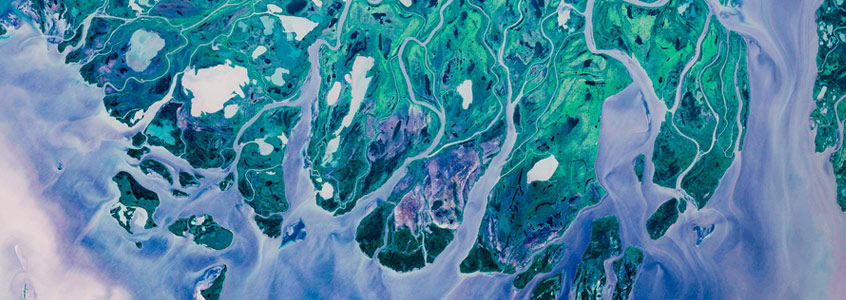School of Geography, Geology and the Environment
Contemporary Environments

Contemporary Environments considers fundamental and applied aspects of environmental processes and human impacts on the environment (including environmental pollution and its effects on ecosystems and human health).
We use a broad range of approaches, including remote sensing, environmental geochemistry, field observations, manipulative experiments and computer modelling. This theme includes the Centre for Landscape and Climate Research (CLCR).
We have an excellent track record of funding for our Environmental Science research from UK research councils, major charities, government departments, the European Union, international trusts and foundations, and a wide variety of other external sources.
Peatlands and forested ecosystems
Peatlands and forested ecosystems represent significant carbon stores and potential sinks for atmospheric carbon. They are, therefore, of central importance in terms of climatic feedbacks. We are providing insights and understanding into anthropogenic and climate-related impacts (e.g. wildfire and deforestation for agriculture) on the structure and function of these environments. Much of this work employs satellite and airborne remote sensing.
Land surface interactions
We also perform in-situ measurements of land surface-atmosphere interactions (e.g. of CO2, CH4 and water), including eddy flux towers and flux chambers, and of land surface-water interactions (DOC transport to surface waters). Mathematical models are often used as integrating frameworks. Much of our research in this area is conducted within the multidisciplinary Centre for Landscape and Climate Research (CLCR) and contributes to the National Centre for Earth Observation (NCEO).
Human-environment interactions
A significant and growing area of research in the School concerns human-environment interactions. This includes the dynamics and impacts of environmental pollution and the sustainability of ecosystems, particularly within less economically developed regions of the world. We are trying to better understand water pollution by nutrients (such as nitrogen and phosphorus) and organic contaminants (such as pesticides, pharmaceuticals and personal care product ingredients).
We are also looking at the dynamics and human health impacts of air pollution. This links with other air pollution research within the College of Science and Engineering and the Centre for Environmental Health and Sustainability (CEHS). Finally, we are developing ways to improve the environmental and health impacts of mining operations. For example, we are developing new methods of extracting gold using deep eutectic solvents that are non-toxic, biodegradable and cost-effective.
Operations of environmental systems
As well as looking at human-environment interactions, we are investigating fundamental aspects of how environmental systems operate including catchment science and fluvial geomorphology. For example, we are attempting to better understand the physical factors controlling sediment transport in rivers and the development of associated sedimentary structures, river morphology and habitat.
The Anthropocene
Finally, we are centrally involved in work on developing the Anthropocene paradigm. The Anthropocene represents a new geological period which is dominated by the planetary-scale impacts of human activities, with the potential to alter and define geological strata.